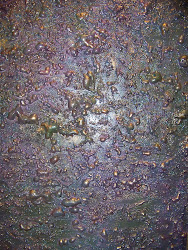
 ing with a different eye from this point on.
ing with a different eye from this point on.
 ing with a different eye from this point on.
ing with a different eye from this point on. Southern Beaten Biscuits and Boone County Country Ham
Southern Beaten Biscuits and Boone County Country Ham not like our present day baking powder biscuits.
not like our present day baking powder biscuits. Leavenworth
Leavenworth 
 out the book, you would have something wonderful to leave to your children and grandchildren! It doesn’t have to be a book with hundreds of recipes, but if you have that many, you really need to consider preserving them some way. A cookbook with heirloom recipes, photos of previous generations, photos of your grandmothers by their handwritten recipes, would truly be a work of art.
out the book, you would have something wonderful to leave to your children and grandchildren! It doesn’t have to be a book with hundreds of recipes, but if you have that many, you really need to consider preserving them some way. A cookbook with heirloom recipes, photos of previous generations, photos of your grandmothers by their handwritten recipes, would truly be a work of art.
 e, it was a plate of food I wanted to arrange into a work of art. Now, I’m in my mid 60s, creeping up on late 60s, and I’ve discovered it is time for me to leave the kitchen and spend my time at ARTichokes painting. I must be honest….I have just as many mistakes and failures in the painting studio as I have had in the kitchen. I have to work at being creative! But I am having a wonderful time!
e, it was a plate of food I wanted to arrange into a work of art. Now, I’m in my mid 60s, creeping up on late 60s, and I’ve discovered it is time for me to leave the kitchen and spend my time at ARTichokes painting. I must be honest….I have just as many mistakes and failures in the painting studio as I have had in the kitchen. I have to work at being creative! But I am having a wonderful time! em on display at ARTichokes everyday.
em on display at ARTichokes everyday.

 Sicily's Capers
Sicily's Capers




 A Ray County BullFrog
A Ray County BullFrogThis has been a week for genealogy. I drove to Richmond, Missouri, in Ray County, to do some research on my great great grandfather, John Joiner. He was born in Tennessee about 1827, was married to “Mary” and they had my great grandfather, John Stone Joiner and 4 or 5 other children. That is not much information to go on, but it is better than nothing. The ladies at the Ray County Historical Society are always helpful, but you do need something to start with. I’d be pleased if I could find his grave to confirm dates, but no luck so far.
As I completed my reading there at the Historical Society’s library, I made the decision to drive by the old farm north of town. I realize trying to go back is not always a wise move; so often what you find is a disappointment. I suppose it was disappointing in a way, I sure wanted to pull into that long gravel drive up to the old house, but I still had the opportunity to see the fence posts my grandfather and 2 uncles worked so hard on during the 1920s; they are still holding up the barbed wire. Everything looks lush and green after all the rain we have had, many farmers are already mowing to keep the weeds down. The aroma of fresh mown hay, weeds, etc. brought back a flood of memories. I can remember running through the tall weeds on our way to the pond to go fishing. There were red-winged black birds  everywhere. Sitting on fence posts and perched on top of the cattails along the waters edge. I loved the way the hedge apples I’d pickup under the trees would make my hands sticky. The bullfrogs were thick around the pond, sitting there puffing out their throats in preparation for a big "jug-o-rum" call, or at least that is what I thought they were saying! Fried frog legs were a favorite back then, just give someone a bb gun and dinner was on the way.
everywhere. Sitting on fence posts and perched on top of the cattails along the waters edge. I loved the way the hedge apples I’d pickup under the trees would make my hands sticky. The bullfrogs were thick around the pond, sitting there puffing out their throats in preparation for a big "jug-o-rum" call, or at least that is what I thought they were saying! Fried frog legs were a favorite back then, just give someone a bb gun and dinner was on the way.
Old Nell, the retired plow horse was still alive back then (but definitely not kickin’ at that point). And she stood out in the pasture flicking flies away with her tail, keeping a sleepy eye on us. The last thing she wanted to do was give us rides! The two old black dogs, Jip and Jerry were a special breed, but my Mom doesn’t remember the name. They would patrol the fields, barnyard and fence lines on a daily basis, just making sure it was still their territory!
Back at the farmhouse with fish on a stringer or a bucket of bullfrogs, we would clean up and wait for dinner. My Aunt Zelma’s Buttermilk Pie was the perfect ending to a perfect day. We would stretch out under the big old pine tree in the front yard and soon we would be seeing only the backside of our eyelids! What a life for a kid!
Uncle Clarence’s Favorite Frog Legs
24 frog's legs, skin removed
1 (4 ounce) packet saltine crackers, crushed
1 cup all-purpose flour
1/2 cup cornmeal
1 teaspoon minced onion
2 teaspoons salt
1 tablespoon ground black pepper
2 eggs
1/2 cup milk
3 cups vegetable oil for frying
1. Rinse the frog's legs and pat dry; set aside. In a large resealable bag, combine the saltine cracker crumbs, flour, cornmeal, onion, salt and pepper. Shake to mix. In a shallow bowl, whisk together eggs and milk.
2. Heat the vegetable oil in a large skillet over medium-high heat. The oil should be about 1/2 inch deep.
3. Dip the frog's legs into the milk and egg, then dip into the cracker mixture until evenly coated. Carefully place them in the hot oil. Cook until golden brown on each side, about 5 minutes per side. If the legs start to brown too quickly, reduce the heat to medium. Drain on paper towels before serving.
Aunt Zelma’s Buttermilk Pie
1 unbaked pie shell
2 cups sugar
4 tablespoons flour
1 teaspoon vanilla
1 stick butter
2 eggs, beaten
1 cup buttermilk
½ teaspoon salt
Melt the butter, add the sugar, flour, vanilla, eggs, buttermilk and salt, mixing well. Pour into prepared pie shell and bake at 350 degrees for 1 hour, until nicely browned.


 rb Cobbler
rb Cobbler







